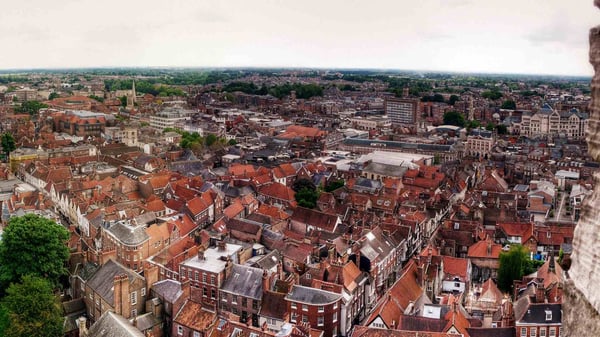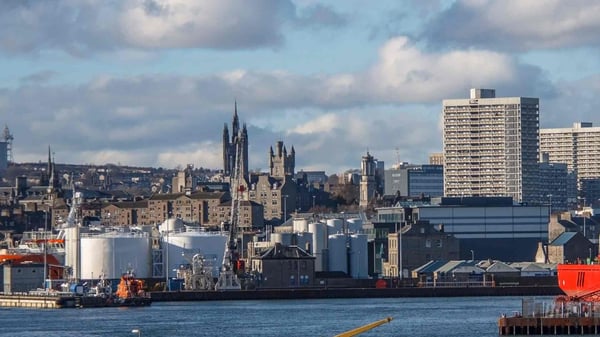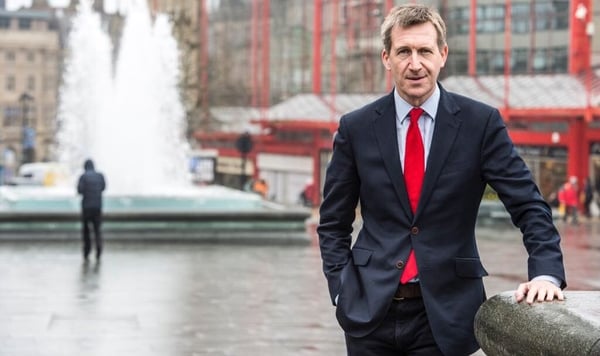How Westminster is becoming a smart city
The City of Westminster is developing a smart city programme aimed at improving the quality of life of residents and visitors to the London borough. But how does the local authority ensure that it is applying the right solutions that work for people and businesses with diverse needs?
Aruj Haider, Chief Digital and Innovation Officer (CDIO) at Westminster City Council, tells Government Transformation why listening to citizens is key to ensuring the success of any city that wants to be ‘smart’.
What does ‘smart city’ mean for residents?
Before taking on the post of Chief Digital and Innovation Officer, Aruj Haider held various transformation and organisational development roles for over 10 years at Westminster City Council.
At first, she was hesitant when offered the CDIO job: this would be her first stint in technology and she feared it would involve applying “tech for tech’s sake”. However, she soon realised that behind the technology part of the job title lay the opportunity to make an impact in Westminster by applying a citizen-centric and “common sense” approach to residents’ problems.
“It started off as a secondment, an experiment,” Haider says. “The organisation was checking if I am going to work out, I was checking if this is going to work out for me… And in the end, I absolutely loved it.”
Haider’s portfolio responsibilities include smart cities, customer experience and transformation - all of which, she points out, are connected. But when she began attending meetings about smart city planning two years ago, she noticed that there was an excessive focus on technology and creating pilot projects with the latest tech buzzwords, whether that was artificial intelligence or IoT. “I just felt like something was missing from all this,” Haider tells Government Transformation.
She decided that her team should spend time researching what ‘smart city’ meant for the people in the borough of Westminster. They began working with key stakeholders within the council and also drew inspiration from other London and UK local authorities, as well as international cities such as Barcelona and Amsterdam. But most crucially, Haider’s team asked citizens living and working in the borough what a smart city looked like for them.
“‘Smart city’ is such a broad concept,” Haider continues. “We sought feedback from our residents, our communities, our businesses and visitors, and we came up with the tagline of being 'a smart city for all'. It is all about putting the citizens at the heart of it. We don’t want tech for tech’s sake.”
Westminster is a borough with stark socioeconomic inequalities, home to some of the wealthiest but also to the most income-deprived neighbourhoods in England. In this landscape, Haider thinks that being an inclusive “smart city for all” means “being intelligent” in understanding the existence of very diverse needs and only then bringing technology to meet those needs.
“I’m not just talking about residents but also about serving businesses and visitors,” Haider adds. “Westminster has a local, national and international stage because of its iconic legacy and history. The smart city programme is about understanding all these different needs.”
Empowering citizens through ‘Innovation Challenges’
Westminster’s smart city programme is underpinned by four themes aimed at finding ‘smart’ digital and technology solutions to address the needs of residents, businesses and visitors. Those themes are empowering people, extraordinary experiences, clean tech city, and innovation ecosystem.
On the first of these themes - empowering people - the objective is to listen to people in Westminster to understand their needs and challenges and come up with innovative ideas based on that feedback. Work done in this area includes the creation of an ‘Innovation Challenge’, where residents could share their ideas and solutions to some of the borough’s problems.
To make the innovation challenge as inclusive as possible, the competition was preceded by a pre-engagement phase with community sessions to gather representative views from all the different demographic groups across the borough. Digital ambassadors were sent out to ensure that older people and those without digital access were able to submit their ideas as well.
“Typically, when we think about innovation challenges, they have a start and then an end - and that’s it, it dies with the end of the project,” Haider says. “For us, there was a lot of pre-engagement work. We wanted this opportunity to understand the different needs that residents have. We didn’t want to have an innovation challenge that could only be accessible to a certain audience because they are digitally-savvy.”
The Innovation Challenge received almost 200 ideas and tech partners will prototype the winning project. Westminster will also be working with the runners-up by connecting them with services within the council and exploring their practical applications.
Haider adds: “For me, the Innovation Challenge is a live thing. We are going to constantly continue to engage people throughout this process to give them updates on what's happened with their ideas.”
Creating strategic partnerships
With the ‘extraordinary experiences’ theme, Haider and her colleagues are working to improve the customer experience of anyone who lives, works or visits Westminster through initiatives such as a digital card that allows residents to access services in the borough.
As of today, the digital card provides access to Westminster’s libraries and the City Save scheme (a free membership scheme for Westminster residents offering local discounts), but Haider says that other services will be incorporated in future stages.
“The idea is that with this one-stop platform you can access multiple services,” Haider adds. “We are not forcing digital on anyone, it's digital by choice, but we want to make it so good and so easy that over time, everyone will convert to digital.”
The ‘Clean Tech City’ theme is closely aligned with the council’s climate emergency strategy. Westminster’s carbon emissions and air pollution rates are among the worst in the UK and in response to this, the local authority has set an emissions target of becoming carbon neutral by 2040.
Westminster is collating data and combining datasets to understand the carbon footprint of local businesses and take action through funding and planning to tackle this. “It's not just us asking businesses to do something, it's working with them and helping them do that,” adds Haider.
The council has an air quality dashboard that combines different datasets to give a holistic picture of the state of air pollution in Westminster. “We want to understand if air pollution has a link with asthma prevalence, for instance,” Haider explains. “Through all these dashboards that we're creating, we want different things to come together in a smart city operating system that will connect all these datasets together over time, whether that’s air quality, social care, housing… We will then use it to work with citizens and make sure we are informing the right choices.”
The last of Westminster’s smart city programme pillars, the ‘innovation ecosystem’, is the glue linking all the previous themes together. At its core is the creation of strategic partnerships, or “matchmaking”, that links citizens with the right solutions, Haider says.
“The pandemic has highlighted the crucial role that local government and councils play,” she continues. “Typically, we've always had a relationship with vendors where they give services and we manage them through a contract, and that’s not very strategic.”
Haider’s team is now focused on ensuring that suppliers understand the council’s values when they enter into a partnership. Initiatives aimed at fostering this kind of strategic partnerships include the creation of ‘innovation hubs’ in the city hall where companies like Google engage with residents and schools to understand the issues affecting Westminster and co-create digital and technological solutions.
Haider concludes: “We don't want to work with partners whose values don't align with ours, but equally, we want to learn and be challenged by them.”





